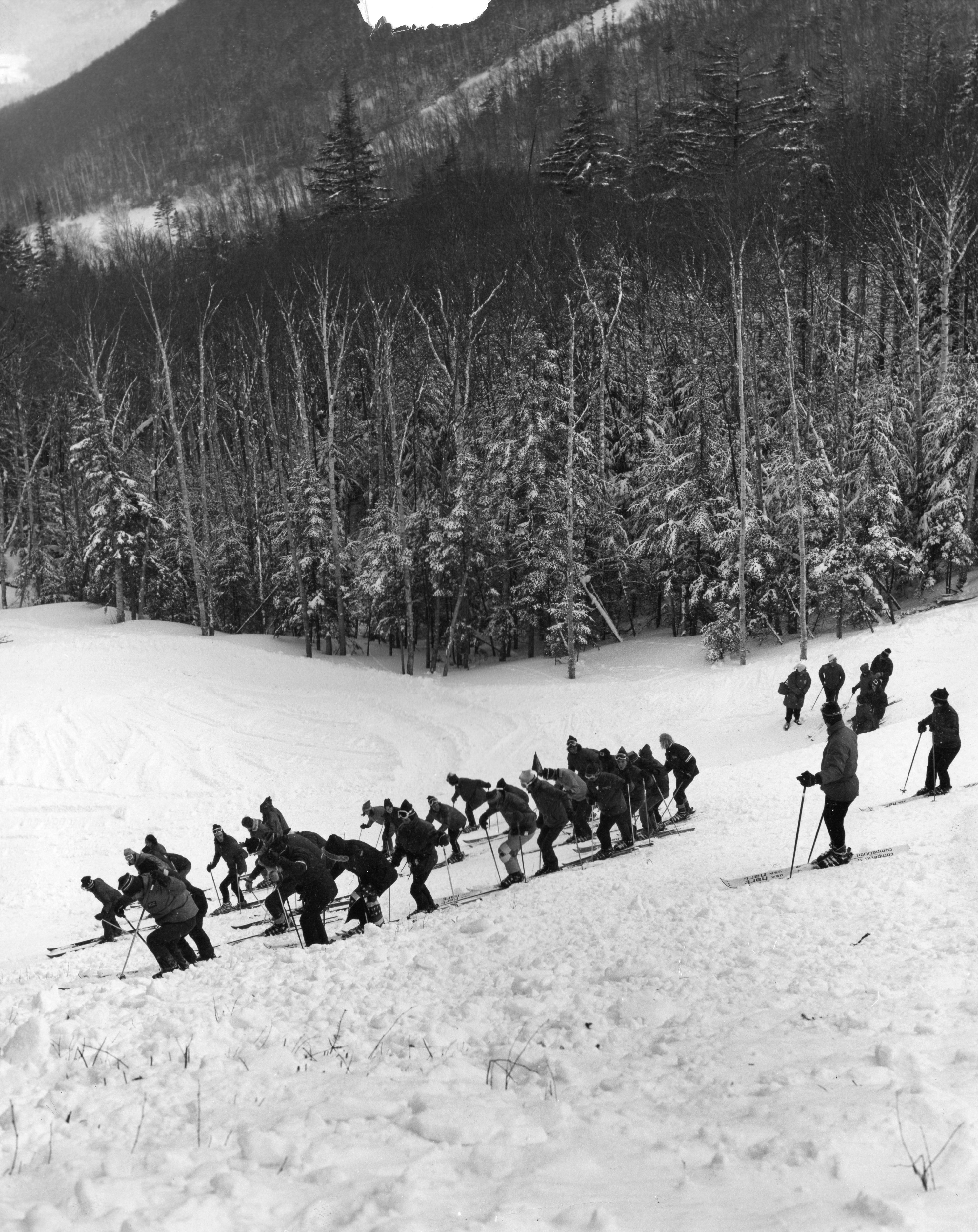By: Jennifer Tufano
It’s late February and as the icicles drip away on the roof lines, it’s hard not to feel the pull of spring. The days are growing longer and this season’s fantastic snow has allowed for plenty of winter pursuits. After writing the January article on the former Mt. Whitney, a ski hill associated with the Lake Placid Club, requests came in for a follow-up piece on Scotts Cobble. One mention of Scotts Cobble in this town brings up memories and stories of first time skiing, skiing with friends after school, the infamous tow rope, and infinitely wide smiles. Here is a bit about this beloved family ski area.
Founded in 1938 by the Town of North Elba, Scotts Cobble stands 2549 feet in elevation and is the 462nd highest peak in New York State. In a 1974 Lake Placid News article by Phil Gallos, he describes it as “the ledgey but mostly wooded hill which forms the western edge of the Craig Wood Golf Course. If we stand at the Lake Placid Horse show grounds with Whiteface Mountain at twelve o’clock, Scotts Cobble will be seen between three and four o’clock.”
In 1942, the ski center unveiled improvements. The rope tow had been moved to the opposite side of the original run and extended thru the timber to the top of Cobble. The new tow had been constructed in two stages making is possible for novices to ride to the end of the first stage and ski down the novice hill, while intermediates continued to the top to take advantage of the full hill which had been greatly improved. The hill had been widened for its entire length with the upper section now more than double its past width. A large ski cabin with complete luncheon facilities offered skiers an additional convenience.
Until 1958 when the Whiteface Mountain ski complex was dedicated and emerged as a world-class facility, Scotts Cobble provided family-friendly fun for Lake Placid locals and visitors alike. Kids remember the rope tow burning through their gloves as they held tight on their way up the slopes. The rope tow, installed by Fred Pabst, heir to the Pabst fortune and ski entrepreneur who owned a company which produced J-bars and rope tows, served skiers until 1954 when the poma lift was installed.
Others locals remember skiing at Scotts because they were not allowed to go to Whiteface’s steep slopes until they were ‘older’, perhaps 4th grade or higher. Why drive all the way to Wilmington when there was perfectly good skiing right in town?
Laura Viscome was an active member of the Professional Ski Instructors of America and taught at Mount Whitney for many years. From 1959 until 1972, she ran the Lake Placid Youth Commission’s Alpine Skiing Program, offered without charge after school at Scotts Cobble. How many of you learned, or know someone who learned, to ski under Laura’s watchful and encouraging eye?
New York is home to the greatest number of lost ski areas in the country. Those in good company with Scotts Cobble are Fawn Ridge, Mt. Whitney, and Mirror Inn. Scott’s Cobble began to lose money during the 1969-1970 season, a decline which continued until it was closed by the Town of North Elba in 1973. 1973 was the same year the Lake Placid Ski Club decided to move the recreational ski program to Fawn Ridge. To view the former ski area now, so many years later, one wouldn’t know a vibrant, local, accessible ski area once occupied the space.

